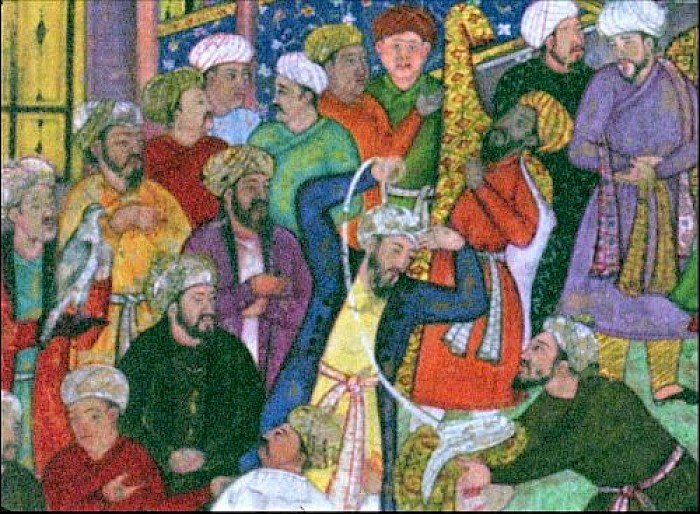Shown in [REPORTÉE EN SALLE] Compétition #7.
Synopsis
A mood board for the Deccan Sultanate of South India. A tapestry of images takes us through lavish chandeliers from the court of the Last Nizam of Hyderabad to the illuminated memoir of Babur, the founder of the Mughal Dynasty. A series of disappearing sonic crescendos flood underneath, remembering the fall of a former grandeur. This film is an ode to intricacy and majesty, through reverie and voyeurism.
Text from the selection committee
Durbaar (Gautam Valluri’s fourth film) spreads its proposal of sounds and images like a peacock in courtship mode: from the sound-only crescendo introduction (where one might imagine the peacock’s long, still collapsed trail) to the explosion of colours of the miniature paintings sequence. In between these sequences: the obsessive contemplation of the lavish chandeliers from the court of the Last Nizam of Hyderabad.
Translation made by the translator www.DeepL.com/Translator
– S.M.
Can you please tell us about the use of sound in this film, it seems to me that it plays a key role and it is fundamental in order to understand the project ?
The film is designed as a tetraptych, where each of the four parts allude to one specific aspect of the epoch I’m trying to reimagine. The first part being purely sound (a musical “overture”) establishes a sonic ambiance for what’s to come. I improvised this entire part on a classical piano, then reversed it digitally (as if to give a sense of “going back” in time) before layering it over field recordings of a call to prayer from a mosque. The second part is “architectural” where the sound is meant to echo through the lavish chandeliers and “ring” off of them. The sound for this part is purely constructed from ‘found’ sounds, sort of a collage from other sources. The third part is purely visual and hence has a notable absence of sound. The final part is also performed by me, digital imitations of dolphin sounds played on a virtual keyboard.
I don’t like the idea of sound reinforcing the message of the visual in a film. I see sound like a layer of varnish over furniture, it protects what’s underneath but also somehow visually enhances it. I like to weave in and out of synchronization of sound and image and as a result allow them to influence each other. Much like Peter Kubelka’s Arnulf Rainer or the painter Unsere Afrikareise.



